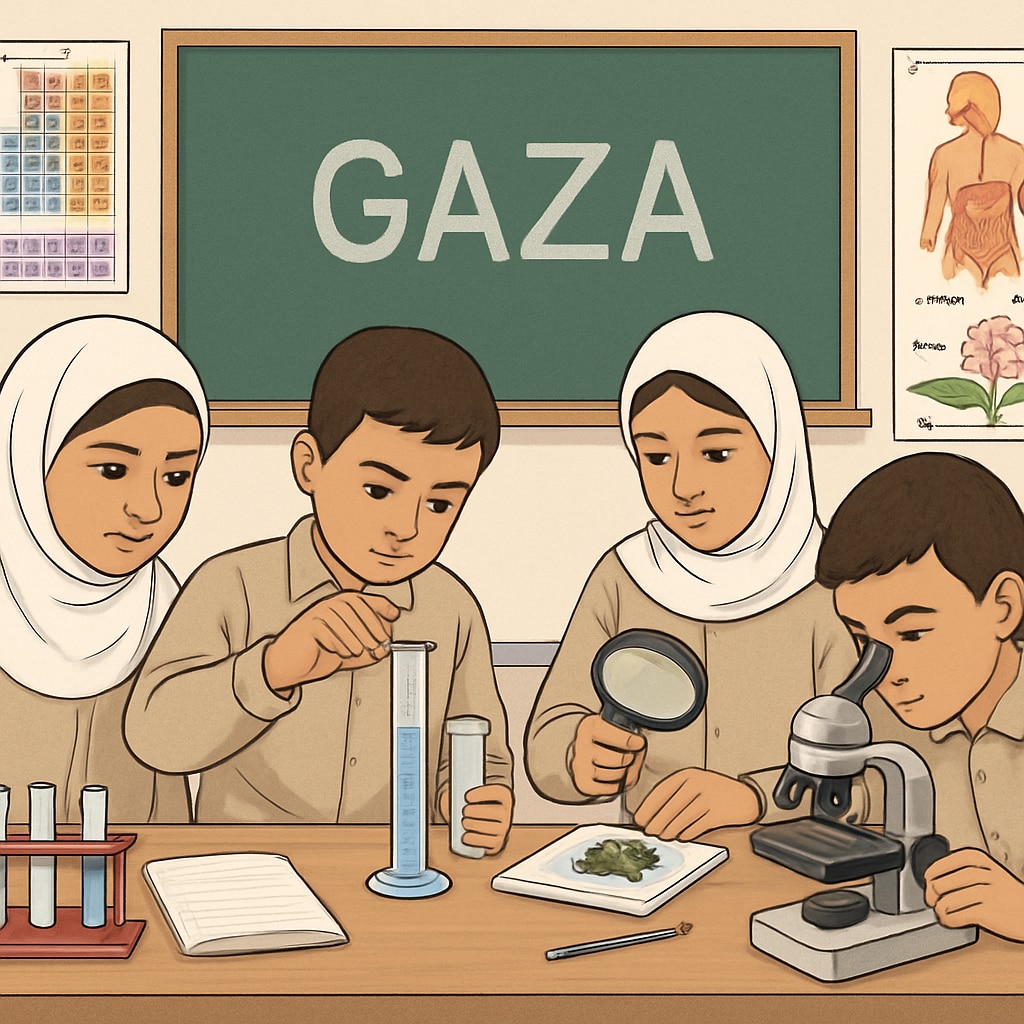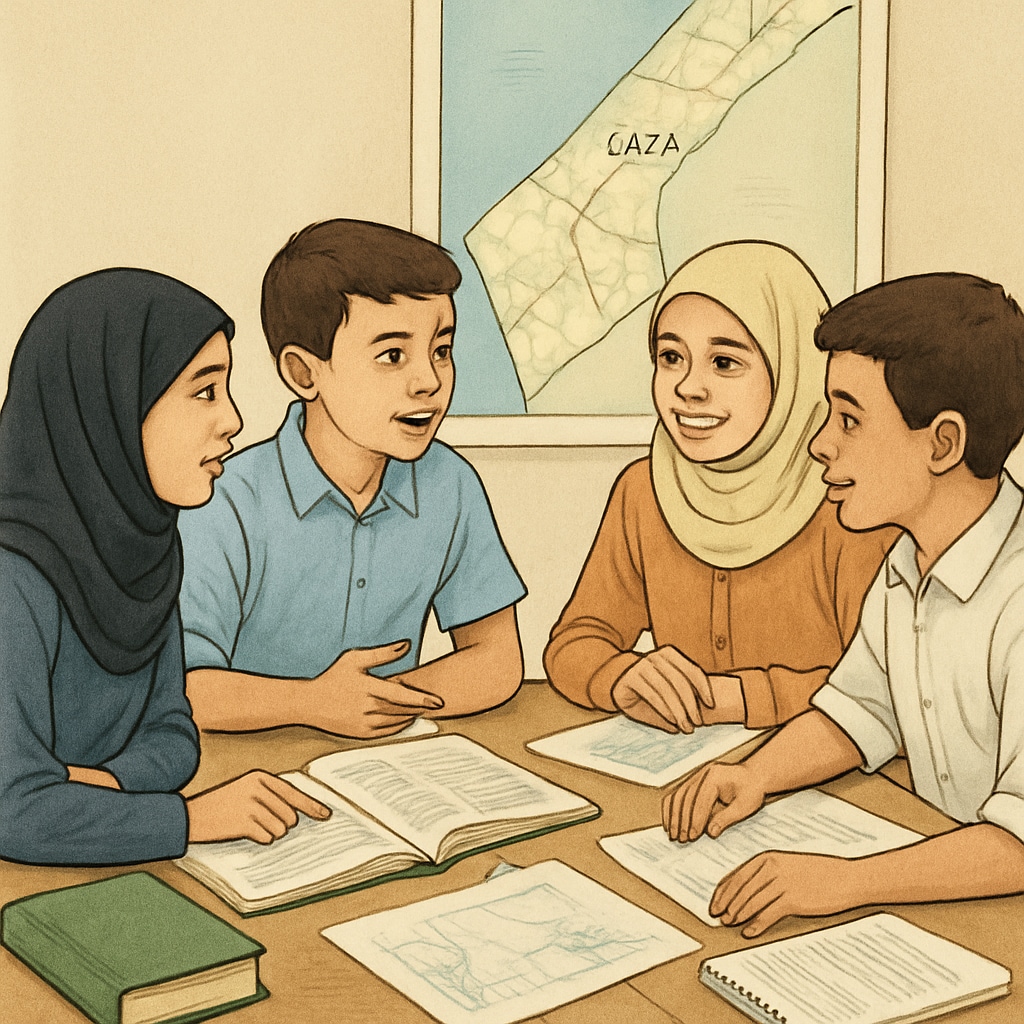Reconstructing the education system in conflict-affected regions like Gaza is both a challenge and an opportunity. A well-designed curriculum for science and social studies can play a critical role in restoring education, fostering understanding, and promoting peace in such areas. In this article, we explore the principles and steps necessary to develop a curriculum framework that respects Gaza’s cultural heritage while aligning with international educational standards. This effort is vital to addressing the region’s pressing educational needs and supporting the broader goal of social cohesion.
Building a Science Curriculum for Gaza Schools
Crafting a science curriculum for Gaza schools requires a careful balance of local relevance and global applicability. The curriculum must provide students with foundational scientific knowledge while addressing the unique environmental and societal challenges of the region. For example, lessons could cover topics such as water conservation, renewable energy, and environmental sustainability, which are particularly pertinent to Gaza’s resource-scarce environment.
- Incorporate Local Context: Teaching materials should include examples from Gaza’s natural environment, such as the Mediterranean ecosystem or local agricultural practices.
- Focus on Problem-Solving Skills: Encourage hands-on learning and critical thinking through experiments and projects, such as designing water filtration systems.
- Global Standards Alignment: Use internationally recognized frameworks like UNESCO’s Education for Sustainable Development (ESD) as a reference to ensure the curriculum meets global benchmarks.

Additionally, teacher training is essential to ensure educators are equipped to deliver these lessons effectively. Partnerships with international organizations could provide resources and expertise to support educators in this process.
Designing a Social Studies Framework to Promote Peace and Understanding
Social studies education in Gaza should aim to foster critical thinking, empathy, and a deeper understanding of both local and global contexts. Given the region’s complex history and ongoing challenges, the curriculum must be designed to promote dialogue and tolerance while avoiding divisive narratives.
- Highlight Shared Histories: Include lessons that explore shared cultural and historical experiences within the region to build a sense of unity.
- Focus on Civic Education: Teach students about their rights and responsibilities as citizens, emphasizing community participation and governance.
- Global Perspectives: Introduce students to broader global issues, such as human rights, environmental challenges, and technological advancements, to foster a sense of global citizenship.

Incorporating interactive teaching methods, such as group discussions and role-playing, can make social studies more engaging and impactful. These methods encourage students to actively participate and reflect on their learning.
Challenges and Opportunities in Curriculum Design
Developing a curriculum for Gaza schools is not without its challenges. Limited resources, political instability, and the need for extensive teacher training are significant hurdles. However, these challenges also present opportunities for innovation and collaboration.
For instance, digital resources and e-learning platforms can supplement traditional teaching materials, making education more accessible. Collaborative initiatives with international educational organizations can provide funding, expertise, and training to overcome resource limitations.
Moreover, involving local educators and community leaders in the curriculum development process ensures that the content is culturally relevant and widely accepted. This participatory approach can also build trust and support for the new curriculum, increasing its chances of successful implementation.
In conclusion, designing a science and social studies curriculum for Gaza schools is a complex but essential task. By focusing on local relevance, global standards, and innovative teaching methods, educators can create a framework that not only rebuilds the education system but also lays the groundwork for a more peaceful and prosperous future.
Readability guidance: To ensure clarity and engagement, the article uses short paragraphs, bullet points to summarize key ideas, and transitions to connect sections smoothly. Use of passive voice and long sentences is minimized.


